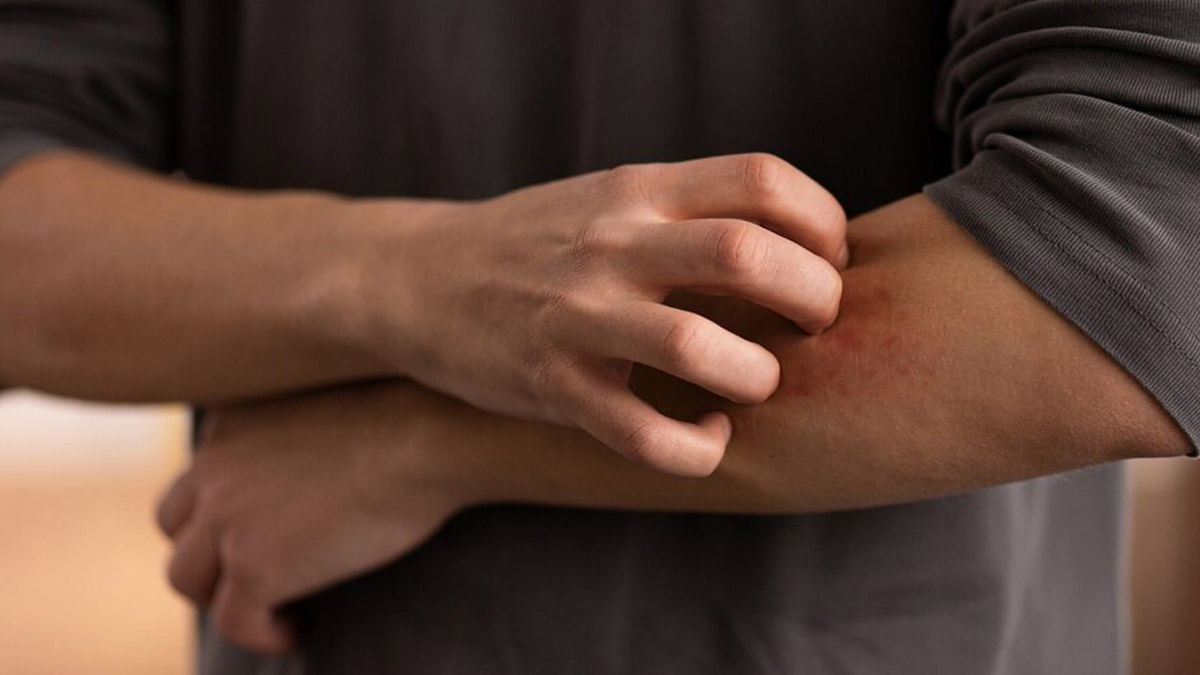
The monsoon brings with it a number of skin infections, attributed to the warm temperatures and high humidity and dampness levels. Ringworm is a common skin problem that is prevalent during the rainy season. While the condition has nothing to do with worms, it does cause ring-shaped rashes on the skin, which can be highly distressing and unappealing to look at.
Table of Content:-
In an interaction with the OnlyMyHealth team, Dr Sonali Kohli, Consultant Dermatologist, Sir H.N. Reliance Foundation Hospital, shares the cause behind ringworm infections and ways to prevent them from spreading as well as manage the condition.
What Causes Ringworm Infections?

Ringworm is caused by fungi that thrive in warm and humid environments, such as locker rooms and public showers, says Dr Kohli. “The primary culprits behind ringworm infections are dermatophytes, specifically species like Trichophyton and Microsporum. These fungi invade the outer layers of the skin, leading to the characteristic rash,” he adds.
While ringworm can infect anyone, children and people with weakened immune systems are more at risk, according to StatPearls Publishing. Research suggests that children are more likely to get it from animals (zoophilic tinea), while compromised immunity can lead to a more severe form of the infection.
It can spread from person to person through skin-to-skin contact with an infected person. It can also transmit to other areas of the body if a person touches the affected area and then touches other body parts, such as the hands.
Different types of ringworm infections can occur. These include:
- Tinea corporis: Affects the body (arms, legs, torso, and face).
- Tinea pedis (athlete’s foot): Between toes and on the soles of feet.
- Tinea cruris (jock itch): In the groin, upper thighs, or rectum.
- Tinea capitis: Bald spots on the scalp.
- Tinea manuum: Dry, cracked palms.
- Tinea barbae: Appears on the beard area.
- Tinea unguium (nail involvement): Thick, discoloured, and deformed nails.
Characteristics Of Ringworm

Here’s what ringworm looks like:
Appearance: It typically begins as a flat, discoloured patch on the skin. In lighter complexions, it appears red; in darker complexions, it may be brown.
Shape: The patch forms a ring-like or circular shape with a raised, scaly border.
Itchiness: The affected area is often intensely itchy.
Spread: Ringworm can spread easily through close contact with an infected person, animal, or contaminated object.
Also Read: Yeast Infection On Skin: Are They Preventable?
How To Prevent Ringworm Infection From Spreading

Dr Kohli advises applying Over-the-Counter (OTC) or prescription antifungal creams, lotions, or oral medications to manage and control the spread of ringworm.
He also recommends keeping skin dry, avoiding sharing personal items, and washing hands thoroughly, especially after touching the affected area.
Most importantly, one must avoid scratching, as it can worsen the infection and spread it.
The American Academy of Dermatology Association (AADA) also recommends treating all ringworms at the same time.
The health body says, "If you have athlete’s foot and ringworm on your hands, it’s important to treat both your feet and hands. If you treat only one area, you’ll still have a ringworm infection. The infection can quickly spread to other areas again."
Also watch this video
How we keep this article up to date:
We work with experts and keep a close eye on the latest in health and wellness. Whenever there is a new research or helpful information, we update our articles with accurate and useful advice.
Current Version